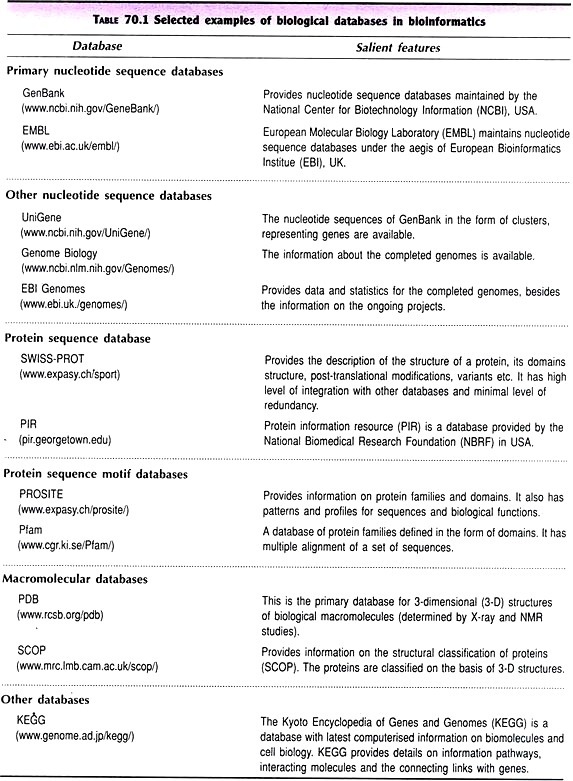ADVERTISEMENTS:
This article throws light upon the four examples of biological databases in bioinformatics. The four examples of biological databases are:
(1) Nucleotide Sequence Databases (2) Protein Sequence Databases (3) Macromolecular Databases and (4) Other Databases.
Biological Databases:
The collection of the biological data on a computer which can be manipulated to appear in varying arrangements and subsets is regarded as a database. The biological information can be stored in different databases. Each database has its own website with unique navigation tools. The biological databases are, in general, publicly accessible.
ADVERTISEMENTS:
Selected examples of biological databases are briefly described (Table 70.1).
Biological Database # 1. Nucleotide Sequence Databases:
The nucleotide sequence data submitted by the scientists and genome sequencing groups is at the databases namely Gen Bank, EMBL (European Molecular Biology Laboratory) and DDBJ (DNA Data Bank of Japan). There is a good coordination between these three databases as they are synchronized on daily basis. Besides the primary nucleotide databases (referred above), there are some other databases also to provide information on genes, genomes and ongoing research projects.
Biological Database # 2. Protein Sequence Databases:
Protein sequence databases are usually prepared from the existing literature and/or in consultation with the experts. In fact, these databases represent the translated DNA databases.
Biological Database # 3. Macromolecular Databases:
ADVERTISEMENTS:
The three dimensional (3-D) structures of macromolecules are determined by X-ray crystallography and nuclear magnetic resonance (NMR). PDB and SCOP are the primary databases of 3-D structures of biological molecules.
Biological Database # 4. Other Databases:
KEGG database is an important one that provides information on the current knowledge of molecular biology and cell biology with special reference to information on metabolic pathways, interacting molecules and genes.

